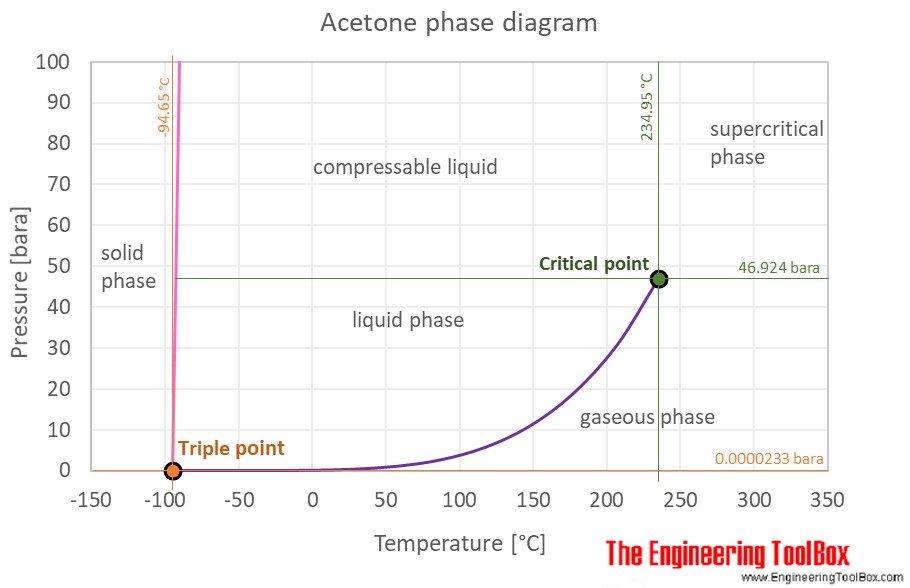If the normal boiling point of acetone is #56^@ "C"# and it has a #DeltaH_(vap)^@# of #"32.1 kJ/mol"#, estimate the boiling point at #"5 bar"#?

1 Answer
Well, by definition, the normal boiling point is at
#ln(P_2/P_1) = -(DeltabarH_(vap))/R[1/T_2 - 1/T_1]#
#P_i# is the vapor pressure of state#i# .#DeltabarH_(vap)# is the molar enthalpy of vaporization, assumed constant in the temperature range.#T_i# is temperature of state#i# in KELVINS, and#R# is known from the ideal gas law.
Solving for the second temperature, i.e.
#-R/(DeltabarH_(vap))ln(P_2/P_1) = 1/T_2 - 1/T_1#
#1/T_1 - R/(DeltabarH_(vap))ln(P_2/P_1) = 1/T_2#
Thus, we get:
#color(blue)(T_2) = [1/("56 + 273.15 K") - (0.008314472 cancel"kJ/mol"cdot"K")/(32.1 cancel"kJ/mol")ln((5 cancel"bar")/(1 cancel"bar"))]^(-1)#
#=# #"381.5 K"#
#~~# #color(blue)(108^@ "C")#
And this should make sense, because the slope of the liquid-vapor coexistence curve is pretty much always positive.
Thus, the higher the temperature at which one tries to boil, the harder it is to boil, and the higher the vapor pressure that one needs to reach to make that happen.

